Some Unique Places NCERT Solutions | Our Wondrous World Class 5 - New NCERT PDF Download
| Table of contents |

|
| Page No. 95 |

|
| Page No. 96 |

|
| Page No. 97-98 |

|
| Page No. 99 |

|
| Page No. 100-101 |

|
| Page No. 102 |

|
| Page No. 104 |

|
| Page No. 105-106 |

|
| Page No. 107 |

|
| Page No. 109 |

|
Page No. 95
Find out
Q. Look at the map for the southernmost point of India.
Answer: Indira Point is the southernmost tip of India.
Q. In which sea are the Andaman and Nicobar Islands located?
Answer: They are located in the Bay of Bengal.
Q. Name the other islands you know.
Answer: Lakshadweep, Diu, Daman, Majuli (in Assam), Elephanta (near Mumbai).
Page No. 96
Activity 1
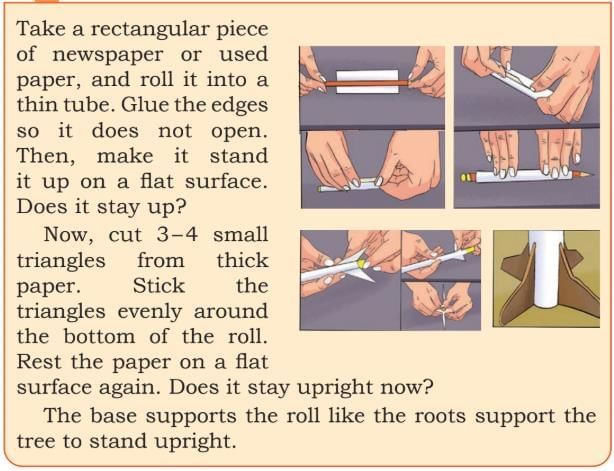
Answer: It shows how support at the base helps an object stand upright — just like roots help a tree stand tall and strong.
What the activity teaches:
- A simple paper roll (like a tree trunk) can't stand by itself — it wobbles or falls.
- But when you add small triangle “roots” at the bottom (like the roots of a tree), the roll stands firmly.
- So, students learn:
Roots give support and balance to trees, especially during wind or rain.
Page No. 97-98
Write
Q. Draw or write about your favourite fish or other sea animal.
Answer: Example: My favourite sea animal is the dolphin. Dolphins are friendly, smart, and live in groups called pods.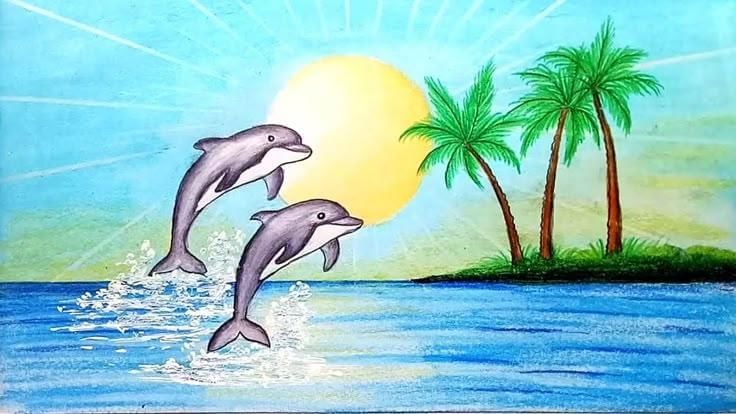
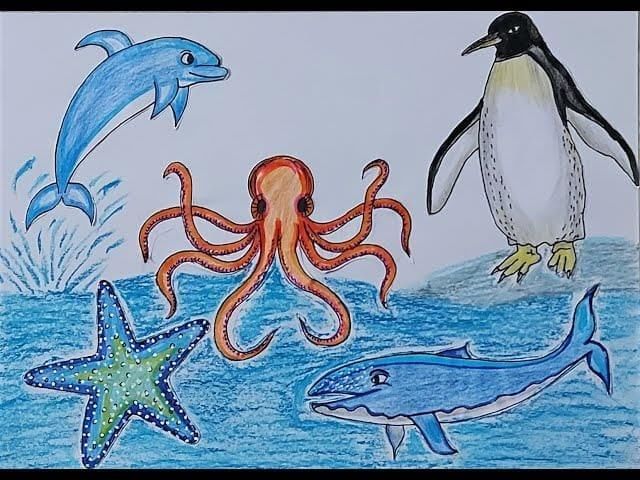
Q. List at least three living things found in the sea.
Answer: Fish, octopus, crab, starfish, sea turtle, jellyfish.
Discuss
Q. Why do you think life under the sea is just as important as life in the forests?
Answer: Sea life helps give us oxygen, food, and keeps the water clean. Both are homes for many living things.
Q. How do you think the coral reef helps the fish and other sea creatures?
Answer: Coral reefs provide shelter and protection. Many fish find food and hiding places there.
Page No. 99
Write
Q. What do you see in the mangrove forest? List three things that live there.
Answer: Mangrove trees, mudskippers, crabs, tigers, crocodiles, birds.
Q. What do you think makes this place different from other forests?
Answer: The land is wet, muddy and salty. Trees have special roots that come out of the water.
Page No. 100-101
Write
Q. In what ways do people in Sunderbans depend on the mangrove forests?
Answer: People collect honey, wood, fish, and crabs for their needs. The forests protect them from storms.
Discuss
Q. Why do you think it is important to take care of places like the Sundarbans?
Answer: Mangroves protect us from storms and floods, provide homes for animals, and give resources to people.
Find out
Q. Look around yourself. Do you see any living thing that has something special to help it live there? What is it?
Answer: A cactus has thick skin and long roots to store water and survive in deserts. (Accept any local example, e.g., monkeys have tails to swing from trees.)
Q. Can you name the seven Northeastern states?
Answer: Arunachal Pradesh, Assam, Manipur, Meghalaya, Mizoram, Nagaland, Tripura. (The eighth state included is Sikkim.)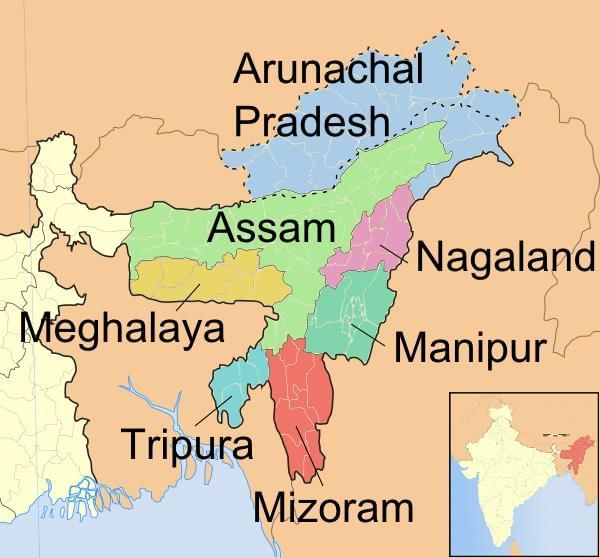
Page No. 102
Write
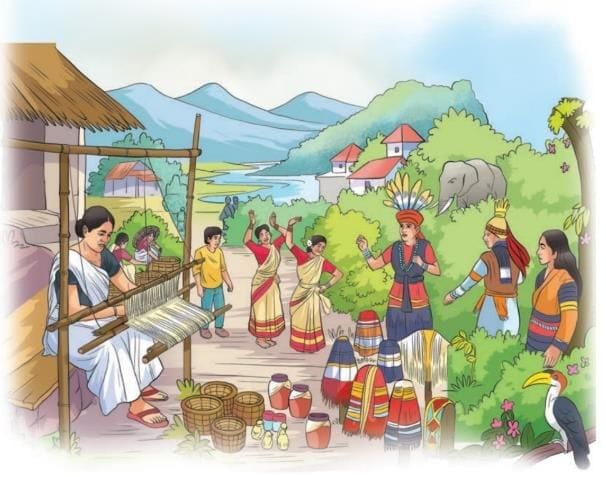
Q. Look at the picture. Can you spot three things being sold in the market?
Answer: Pots, baskets, and clothes.
Q. Can you identify the festival from the above picture?
Answer: Common festivals are Bihu and Hornbill festival.
Q. Why do you think the houses are built on bamboo structures?
Answer: To keep safe from floods and heavy rain.
Q. What animals can you see in the picture?
Answer: Elephant and a Hornbill
Q. What does this picture tell you about the people who live with nature in the Northeast of India?
Answer: They use natural materials, live close to forests, and celebrate with dances and crafts.
Page No. 104
Discuss
Q. In small groups, choose an animal or bird near you that needs protection. What can you do to help? Create a protection plan and share it with the class.
Answer: Protect sparrows in my area:
- By putting water and food in small pots for them
- Do not disturb their nests.
Activity 2

Answer: A good nest is soft inside, strong outside, and safe from rain/wind. It protects eggs and baby birds.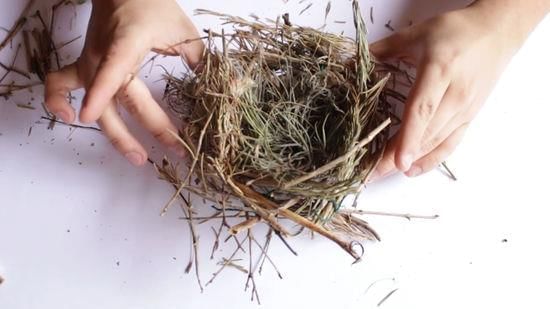
Page No. 105-106
Activity 3

Answer: Yes, by tying a strong string tightly between the chairs, making sure it doesn't sag. The toy will move if the string is strong and well-tied.
Write
Q. Look at the map, locate the Western Ghats and name the six states it passes through.
Answer: Gujarat, Maharashtra, Goa, Karnataka, Kerala, Tamil Nadu.
Q. What animals can you spot in the forest?
Answer: Lion-tailed macaque, tigers, elephants, deer, Malabar parakeet.
Q. What are the people doing in the picture given below?
Answer: Observing/studying nature, taking notes, or collecting fruits (varies by illustration).
Q. Why do you think forts were built on hilltops instead of flat land?
Answer: For better defence and to spot enemies from far away.
Q. Give the names of three rivers that start from the Western Ghats.
Answer: Godavari, Krishna, Kaveri.
Page No. 107
Activity 4

Answer: Example: Mango—Alphonso, Langda, Kesar, Dasheri (answers will depend on local area).
Page No. 109
Write
Q. List three protected areas in the Western Ghats.
Answer: Silent Valley National Park, Periyar Wildlife Sanctuary, Bandipur National Park.
Let us reflect
Q1. What surprised you the most about the places visited in this journey across India? Why?
Answer: I was surprised by how different and special each place is. For example, the Sundarbans have trees with roots growing out of water, and the Northeast has living root bridges made by growing tree roots. I also found it interesting that some animals and birds live only in these places. It shows how amazing and unique nature is in different parts of India.
Q2. Which place would you like to visit the most, and what would you do there?
Answer: I would like to visit the Andaman and Nicobar Islands. I want to see the coral reefs and the special birds like the Andaman hornbill. I would also like to learn more about sea life at the Marine Interpretation Centre.
Q3. How is your region similar to or different from one of the places in the story?
Answer: My region is different from the Sundarbans because we don’t have mangrove forests or salty water. But like in the Northeast, people here respect nature and celebrate festivals that are connected to plants and animals around us.
Q4. Match the following aquatic animals with their features:
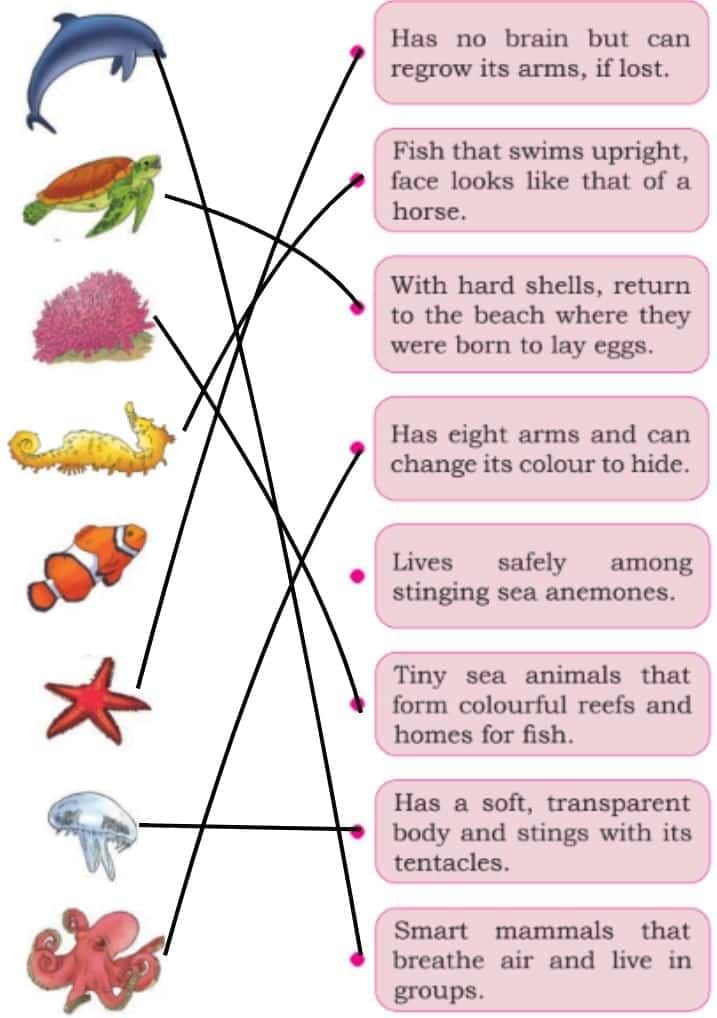
Q5. What is special about mangroves?
Answer: Mangroves grow in muddy and salty water. Their special roots grow out of the water to help them breathe. The roots also hold the soil together and protect the land from being washed away by waves. Mangroves are homes for many animals and help protect people from storms.
Q6. How do people in different regions live in harmony with nature?
Answer: People depend on nature in different ways, like living near forests, rivers, and seas. They protect animals like the Hargila bird in the Northeast, use plants for medicine in the Western Ghats, and wear masks in the Sundarbans to stay safe from tigers. They celebrate festivals and take care of the forest and wildlife.
Q7. Make a collage by pasting pictures depicting vibrant India.
Answer: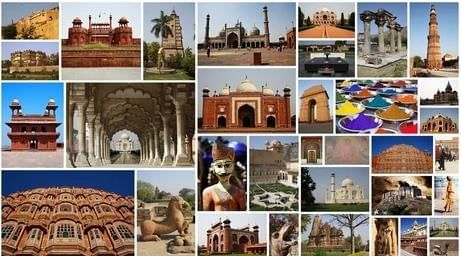
|
11 videos|211 docs|10 tests
|
FAQs on Some Unique Places NCERT Solutions - Our Wondrous World Class 5 - New NCERT
| 1. What are some unique places mentioned in the article? |  |
| 2. Why are these unique places important for cultural education? |  |
| 3. How can visiting unique places benefit students? |  |
| 4. What role do historical sites play in understanding our past? |  |
| 5. How can teachers incorporate the study of unique places into their curriculum? |  |















